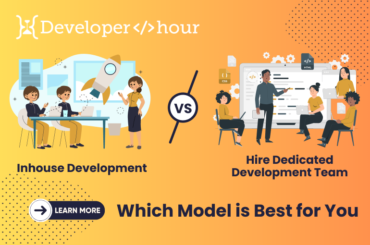A few months ago, the decision fell: your big digital association project will take place! Since then, you have not been idle: identification and prioritization of needs, interview of future users of the solution, budget, specifications, etc.
After considering a home solution, you have realized the obvious: you can not do without an IT provider that is really the job. So who do you turn to for your digital associative project?
There are thousands of IT providers and not all of them are of equal value. We share in this article the essential elements to check to help you choose “the” IT partner who will bring your association into a new digital era.
We explore here 8 determining criteria
- Experience
- The simplicity
- Project management
- The assistance
- Support to change management
- Security
- Data Management and GDPR
- The price
These different elements are included in the technical sheet of this article. Ask for free to keep track of it.
The experience of the IT service provider:
As with many things in life, trust word of mouth.
Ask other association leaders, ask them for recommendations and details on how they experienced the experience with their provider, without embellishing or degrading the table.
You can ask them for factual elements (holding deadlines, organization, frequency of exchanges, etc.) and elements of feeling (trust, transparency, ease in exchanges, etc.).
When talking with a proposed service provider, ask him if he has worked with associations before or if he is used to working for other types of structures. Your goal: Determine if he has the ability to understand exactly what your issues and needs are.
Do not hesitate to ask him for references of previous associative projects. As for recruitments, you can contact these references if they were for them a large-scale project. If the provider is reluctant to communicate you contacts, it may eventually put you in the ear: it is not very good omen.
What is the Difference Between Onshore and Offshore software development?
Simplicity in the exchanges and in the realization of the digital project:
We are well placed at Developer Per Hour to talk about simplicity: it’s one of our three values. “Simple is beautiful” could be one of our mantras.
And paradoxically, to make simple is often … complicated!
However, when it comes to computer projects, simplicity is required; it is to avoid at all costs to create a gas plant.
From the needs expressed and prioritized, the service provider must provide you with the simplest technical answer possible. The delivered solution must be easy to use by anyone who needs it. Otherwise it will not be used, simply, and your digital project will turn into waste of time, money and energy. It would be a shame.
The simplicity applies not only to the technical solution provided by the provider, but also to the way of working and communicating with him. On this aspect, the first exchanges you will have will probably give you a good idea of the way things will turn out.
Finally, another indicator can direct you to simplicity: does the service provider offer a clear, easy-to-understand price list and no hidden cost? If there are any doubts about this, ask for explanations. If they are slow in coming, it is probably wise to consider another solution.
Does the IT provider offer quality project management?
Difficult to advance a project without a person or a dedicated team. Does the service provider propose to you to have a single contact who will be able to understand your questions and make the link with the technical team? Is this interlocutor sufficiently experienced and responsive?
Project management usually involves dedicated tools (there are many: Trello, Asana, etc.) and communication channels that facilitate exchanges.
Is there a timetable that provides a precise and serious framework for the development of the project? The frequency of progress meetings and exchanges will allow you to understand how the provider works, and if this way of proceeding is compatible with your organization and your processes.
Does the IT provider offer support for change management?
Enabling a large digital project in your association or associative network can lead to many frictions internally. It is the eternal subject of resistance to change.
The role of the provider is then to bring you all the keys to accept this change internally and accompany it as best as possible by involving the different levels of the organization.
This accompaniment to change can take many forms:
- Face-to-face training for the different teams,
- Webinars or distance learning,
- Tutorial videos,
- Internal documentation,
- Help center, etc.
In your discussions with potential providers, consider whether they are attentive to these aspects, whether they propose to adapt to the people involved in the project and consider a training plan for your teams.
Is assistance included in the delivery?
Few digital projects “one-shot” – understand “the bridges are completely cut once the solution delivered”.
Normally, once trained, the people in the internal project team in your association will be perfectly comfortable using the solution. But what about people who have not followed the development of the project? What will happen to those who will soon join your associative team?
There arises the question of assistance. It broadly covers two subjects: support for use on the one hand, and intervention in case of technical problems on the other.
If the delivered solution is simple enough and the internal documentation sufficiently complete, then the help for use should be minimal. However, it must be available to unlock anyone who needs it .
The question of possible technical problems is more difficult.
Even taking all possible precautions, no one is safe from small grains of sand in the wheels that can give rise to technical anomalies. It is therefore essential that your service provider can intervene quickly and provide an effective solution.
In short, when choosing your IT provider, be sure to explore the commitments that you must meet once the project is delivered.
What security guarantees does your IT provider provide you?
Security around your IT solution is a shared responsibility between your association and your service provider.
On your side, security concerns use.
For example, are your passwords written on a piece of paper visible and accessible to everyone? Are user accounts shared among multiple people?
On the service provider side, security concerns the technique.
Overall, your IT service provider will not be able to prevent you from sharing a password (# never do), but it must put everything in its power to ensure maximum security around the solution it offers.
Here are some examples of construction sites concerning safety
If it is an online software or a website, is there a secure access? This is the “HTTPS” that you usually see on the URLs of websites … secure. HTTPS stands for “HyperText Transfer Protocol Secure”, literally “secure hypertext transfer protocol”. This allows the visitor to verify the identity of the website they access.
If your solution includes online payment, verify that 3D secure is enabled. This widely democratized system limits fraud by ensuring that each card is used by the cardholder. Today, it is essential if you want to set up online payment.
Do you have the option to enable dual authentication? It’s a bit like the 3D Secure applied to passwords. If someone uses my password, they must also fill in a unique code that changes every 30 seconds. This makes it possible to verify that the person who wishes to connect has this right.
Does the provider propose password hashing? This consists of not storing the passwords in the clear but storing an imprint, which is calculated from a function of which we do not know the opposite. It is therefore impossible to find the password from his fingerprint. To log in the user, the fingerprint of the entered password is calculated and compared to the stored fingerprint. Thus, in case of hacking of the database, the passwords are not accessible to the attacker.
If your solution requires sending emailing the service he offers a solution that allows to avoid the risk of theft?
These are obviously some examples around security. All are not necessarily indispensable according to your specifications.
Our purpose here is to emphasize the importance of security around the solution offered by the provider, especially when it comes to processing personal data.
Is your provider compliant with the GDPR?
As a legal entity that manages personal data for European citizens, your association is obliged to respect the RGPD – the General Regulations on the Protection of Personal Data.
Entering into force in May 2018, this European regulation obliges the actors dealing with personal data to take various steps to bring more transparency regarding the collection, use and storage of data on European nationals.
One of the measures is to ensure that the contracts of your suppliers comply with the GDPR.
In your discussions, check that the privacy policy of the provider you plan to work with is consistent with the GDPR. Do not hesitate to ask him the various actions undertaken to go in this direction, in particular:
Where are data stored: in the USA or abroad?
Who has access to the data? Which ones and why?
Is the pricing policy compatible with your constraints?
It is impossible to ignore the criterion of price, which is often decisive in the choice of one solution over another.
If a provider meets the above 7 criteria perfectly but presents a quote 10 times higher than other providers, there is a good chance that your treasurer or your Board of Directors categorically refuses to choose it.
Several elements must, therefore, be checked on the price side.
Hidden costs
The famous hidden costs are unpleasant surprises that may come out of the basket once the contract is signed.
It is therefore essential to scrupulously review the elements included and excluded from the service: assistance, maintenance costs, updating, training, technical intervention, etc.
Take the time to go through all the lines.
Credibility of prices
Is the price displayed by the provider credible? What is the “Value for Money”?
Let me explain: if after a discussion on the quote, the provider offers directly to divide its price by 2, is the first quote largely inflated.
This does not contribute to creating a relationship of trust and transparency with the provider.
Fixed price vs. subscription
Finally, there is the big question of the fixed price vs. recurrent.
Overall, the Dedicated development team of your IT project will be
- either agencies or ESN (Digital Service Companies),
- or online software providers.
In the first case, the price will be “one-shot”: a single invoice to honor. Depending on the size of the IT project, it is possible that it is quite high and, therefore, requires a significant financial effort for your association. Again, pay attention to possible hidden costs.
In the case of online software, the subscription model reigns supreme. This helps to smooth prices, spread the financial effort over time, and engage in a relationship over time.
Today, the subscription model is widely democratized: it is often easier to pay a small sum every month than to write a big check that can threaten the cash of your association.
The list of criteria for choosing a development service provider could be lengthened, especially by adding human fit, alignment to common values, geographical proximity, availability, industry, etc.
We have chosen to leave them to your liking to focus on more technical and objective criteria.
Feel free to give us feedback on your experience with IT providers, and if you feel that some essential criteria should complete this list!







